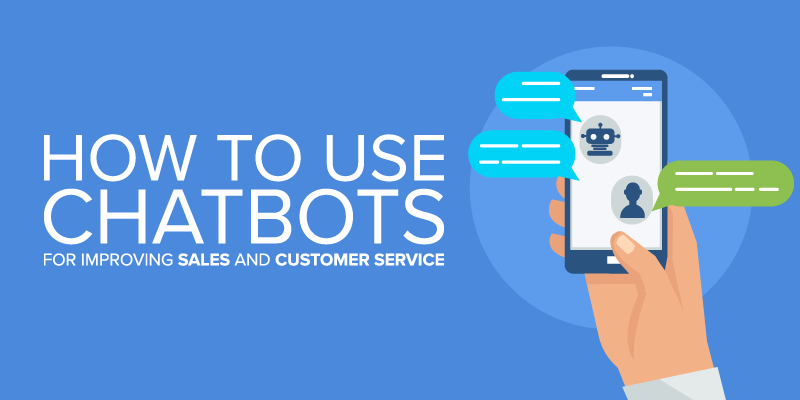Chatbots are no longer just quirky website add-ons or tools for answering basic FAQs—they’ve become a powerful asset for driving sales. With the rise of AI and automation, businesses are discovering that chatbots can streamline customer interactions, boost conversions, and improve the overall buying experience. But how do you use chatbots effectively to make a real impact on your sales numbers? Let’s break it down.
Why Chatbots Are a Game-Changer for Sales
First, let’s talk about why chatbots deserve your attention. At their core, chatbots are digital assistants that can interact with customers in real time. Whether it’s through your website, social media, or messaging apps, they’re available 24/7 to engage potential buyers and guide them through the sales funnel.
Why does this matter? Because customers today expect instant responses. A delay of even a few minutes can mean losing a sale to a competitor. Chatbots solve this problem by being always “on,” ready to answer questions, recommend products, or help close deals. They’re efficient, scalable, and, when done right, can create a seamless customer experience.
Identifying the Right Use Cases
Not every business needs a chatbot that does it all. The key to leveraging chatbots for sales is understanding where they can add the most value. Start by identifying pain points in your sales process. Are customers abandoning their carts? Do leads often drop off before they book a demo? Maybe your sales team is overwhelmed with repetitive inquiries that a chatbot could handle.
Some common use cases for sales-oriented chatbots include:
- Lead qualification: Chatbots can ask preliminary questions to understand a customer’s needs and direct them to the right product or salesperson.
- Product recommendations: With AI-powered personalization, chatbots can suggest items based on a customer’s preferences or browsing history.
- Cart recovery: If someone abandons their cart, a chatbot can step in with a discount code or reminder to complete the purchase.
- Upselling and cross-selling: Chatbots can recommend complementary products or upgrades, increasing average order value.
Designing a Chatbot That Converts
A chatbot isn’t just a script with a smiley face—it’s an extension of your brand. To make it work for sales, you need to design it thoughtfully. Here’s how:
- Be Conversational, Not Robotic: Customers should feel like they’re chatting with a helpful assistant, not a stiff algorithm. Use casual, engaging language, and keep responses concise. Remember, this is a conversation, not an interrogation.
- Prioritize User Experience: Make your chatbot intuitive and easy to interact with. Clearly display it on your website or app, and don’t overwhelm users with too many questions at once. A simple welcome message like, “Hi! How can I help you today?” works wonders.
- Integrate with Your Sales Tools: Your chatbot should work seamlessly with your CRM, email marketing platform, or e-commerce system. This ensures leads and sales data flow smoothly, making follow-ups and tracking much easier.
- Personalize Interactions: Use customer data to tailor the chatbot’s responses. For instance, greet returning visitors by name or reference their past purchases. Personalization shows that you value their time and builds trust.
Boosting Sales with AI-Powered Chatbots
AI takes chatbots to the next level by enabling them to learn and adapt. With AI, your chatbot can analyze customer behavior in real time, anticipate needs, and provide intelligent suggestions. For example, an AI-powered chatbot on an online clothing store might recommend a jacket to go with the jeans in someone’s cart or suggest a popular alternative if an item is out of stock.
AI also allows chatbots to handle more complex conversations, making them suitable for industries with technical products or services. For instance, combining chatbots with an SEO playbook can enhance lead generation efforts by directing users to optimized content that answers their queries, paving the way for a more informed and confident purchase decision.
Measuring Success
How do you know if your chatbot is pulling its weight? Like any sales tool, it’s important to track its performance. Monitor metrics such as:
- Engagement rates: How many users are interacting with the chatbot?
- Conversion rates: How many sales or leads did the chatbot help close?
- Response times: Is the chatbot delivering instant replies as expected?
- Customer satisfaction: Are users happy with the chatbot experience? Use surveys or feedback forms to gather insights.
These metrics will help you identify what’s working and where you can improve. Chatbots aren’t a set-it-and-forget-it solution—they need regular optimization to stay effective.
Challenges to Keep in Mind
While chatbots offer plenty of benefits, they’re not without challenges. One common issue is balancing automation with the human touch. Customers can tell when they’re talking to a bot, so it’s crucial to design a chatbot that feels helpful, not cold. Always include an option to escalate to a human agent if needed—this reassures users and prevents frustration.
Another challenge is making sure your chatbot doesn’t overstep. Pushing too hard to close a sale can annoy potential customers. Let the chatbot guide users gently and naturally through the buying process instead of going for the hard sell.
Final Thoughts
Chatbots are more than just a convenience—they’re a sales powerhouse when used strategically. By identifying the right use cases, designing a chatbot that aligns with your brand, and leveraging AI for personalization, you can turn casual interactions into meaningful sales opportunities.
With the right approach, chatbots don’t just save time—they create value, build relationships, and ultimately drive revenue. So, are you ready to let a chatbot join your sales team?



